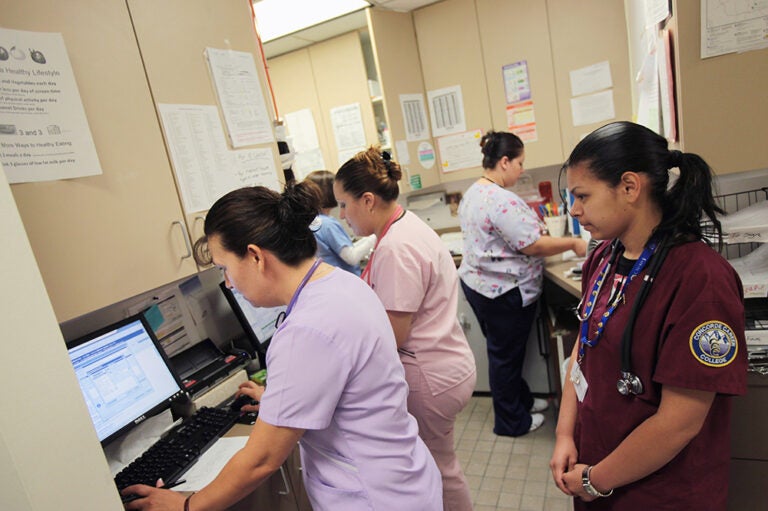High hospital costs are a significant driver of healthcare spending in the United States. While the quality of care is often the same in non-hospital versus hospital settings, the prices charged for treatment in hospitals is higher relative to the same categories or types of care delivered in other settings. To address this — and to help put downward pressure on healthcare cost growth — many policy experts support requiring providers to charge comparable rates for delivering treatment regardless of location, a concept known as site neutrality.
What is Site Neutrality?
Site neutrality refers to the idea that patients should pay the same price for the same services regardless of where the service is performed. In general, treatments performed at a hospital outpatient department (HOPD) are paid at a higher rate than the same treatment at a physician’s office or ambulatory surgical center (ASC). For example, overall Medicare rates for HOPDs are almost twice as high as rates for ASCs. Payment discrepancies can be even more significant depending on the service provided. For example, Medicare pays HOPDs an average of 125 percent more than a physician’s office for an evaluation and management visit. Other services, like echocardiograms, cost nearly three times as much at an HOPD compared to a physician’s office. Those variances are also evident in the private sector, as commercial insurers generally pay more for the same services when they are delivered in an HOPD compared to a physician’s office.
Some site-neutral payment reforms were included in the Bipartisan Budget Act (BBA) of 2015 based on recommendations from the Medicare Payment Advisory Commission (MedPAC). The BBA established site-neutral payments for services at off-campus HOPDs (defined as 250 yards away from a hospital’s main campus), but the policy only applied to future HOPDs. All current off-campus HOPDs, as well as those under construction at the time of enactment of the BBA, were grandfathered in to the site-specific payments. Furthermore, ASCs, stand-alone emergency departments, and on-campus HOPDs are excluded from the site-neutrality rules in the BBA. Based on data available at the end of calendar year 2022, payments to off-campus hospital locations subject to the site neutrality policies set forth in the BBA represent only 2.3 percent of Medicare outpatient spending.
What Are the Implications of Site Neutrality?
A central argument in favor of site neutrality is that there is little to no evidence that the quality of care is better when provided in a hospital setting compared to a physician’s office, ASC, or other facility. In many cases, physician group practices have been purchased by hospitals and relabeled as part of the HOPD, thereby receiving a higher payment rate. The share of physicians working in practices owned by a hospital or health system was 26 percent in 2012; by 2023, that share had increased to nearly 80 percent and included corporate ownership as more private equity firms, insurers, and other businesses began acquiring physician practices. Reducing the payment rates of HOPDs would reduce the incentive for hospitals to purchase physician practices and charge the HOPD rate. Furthermore, data shows that, even with comparable volume growth rates among the different types of care facilities, average prices at HOPDs have grown by 27 percent compared to 11 percent growth at ASCs and 2 percent growth at physicians’ offices.
Site-neutral payments would also affect out-of-pocket costs and cost sharing for Medicare patients, in addition to savings for people covered by private insurance. On average, Part B beneficiaries in 2019 paid a $9 copayment for a standard clinic visit at a physician’s office, but paid 2.5 times as much ($23) for the same service at a HOPD. Site neutrality could make those copayments or other accrued costs less burdensome for patients.
However, hospital groups contend that implementing site-neutral payments could have negative repercussions. They argue that reimbursement rates are formulaically higher for HOPDs to account for differences in regulatory burden, complexity of services provided, equipment, and patient mix (the composition of patient population based on source of payment). Further, reductions to payment rates for a wider range of services could negatively impact the balance sheet of many hospitals. MedPAC’s most recent report found that hospitals’ 2023 aggregate all-payer operating margin (which measures how much net revenue a hospital makes on each dollar of sales after paying for operating expenses) remained below pre-pandemic levels. There is considerable variation in margins (-5 percent to positive 10 percent), which are dependent upon trends in patient volumes, higher labor and supply costs, as well as the end of federal COVID-19 funds. For-profit hospitals tended to fare better in terms of recuperating costs compared to non-profit hospitals.
How Much Savings Could Site-Neutrality Garner?
Lawmakers have recently proposed multiple pieces of legislation with a site-neutrality framework in an effort to attain savings. In particular, such legislation would reform payments for Medicare to alleviate the burden on the federal budget and support Medicare’s Hospital Insurance Trust Fund. Payments to hospitals currently account for nearly 40 percent of all Medicare payments — the single largest component of Medicare spending.
Site-neutral payment reform has bipartisan support, has been recommended by MedPAC, and has been included in multiple President’s Budgets since 2015. Options can be broader or target specific services and, therefore, can range by scope of influence and savings estimates.
One broad site-neutral option would pay HOPDs at the lower stand-alone physician office rate for certain services in addition to paying all hospital-owned physician offices located off-campus at that same rate. An analysis produced for Blue Cross Blue Shield finds that adopting such a policy could save the government $231 billion from 2024 to 2033. Changes to Medicare could also result in spillover effects on private-sector prices because private insurers generally use Medicare’s payment system and simply vary their average level of payments compared with Medicare’s rates. From that perspective, a reduction in Medicare’s fees to hospitals for services commonly performed in other settings would have a proportionate effect on prices in the private sector for those services. Based on that assumption, the policy could save an additional $152 billion over the next decade for out-of-pocket payments from Medicare enrollees and $117 billion for private premium savings. After accounting for interactive effects, combined federal savings, private premium savings, and enrollee out-of-pocket savings would total an estimated $471 billion from 2024 to 2033.
A different policy estimated by the Committee for a Responsible Federal Budget (CRFB) would require the payment rates for certain services (including clinic visits, imaging, and drug administration) performed at on-campus HOPDs to match the Medicare physician fee schedule (MPFS) that applies to physicians’ offices. Additionally, Medicare payments for all services administered at off-campus HOPDs, stand-alone emergency departments, and clinics would be set at the MPFS-equivalent rate. Extension of site-neutral payments for select procedures would also apply to ASCs. Finally, the proposal would authorize the Centers for Medicare and Medicaid Services to identify additional services for application of site-neutral payments as delivery patterns emerge and technology advances. The policy analyzed by CRFB could save Medicare an estimated $153 billion over a 10-year window, bring down premiums and cost sharing for Medicare beneficiaries by $94 billion, and reduce private cost-sharing and premiums by up to $466 billion over 10 years.
More targeted site-neutral options also exist. For example, site-neutral payments for Medicare could pertain to all off-campus HOPDs or narrow its scope to particular types of services, such as drug administration or cancer services. Addressing site neutrality from a different angle, another provision could require health systems to establish and bill patients using a unique National Provider Identifier for each off-campus outpatient department and treat them as subparts of their parent organization. Legislation could also address spending in the commercial market. One proposed bill caps the prices that could be charged by HOPDs, limiting them to the median price charged by independent physician offices.
Conclusion
As healthcare costs continue to rise and reach one-fifth of the economy within the decade, it is imperative lawmakers look for solutions to reduce the financial strain of such costs both on the federal budget and on patients. Adopting site-neutral payments could be a key way to help reduce healthcare spending, lower costs for consumers while maintaining quality of care, and put the nation on a stronger and more sustainable fiscal path.
Image credit: Photo by Getty Images
Further Reading
Quiz: How Much Do You Know About Healthcare in the United States?
The United States has one of the largest and most complex healthcare systems in the world. Take our healthcare quiz to see how much you know about the cost and quality of the U.S. healthcare system.
How Did the One Big Beautiful Bill Act Change Healthcare Policy?
The OBBBA adds significantly to the nation’s debt, but its healthcare provisions lessen that impact by $1.0 trillion.
Infographic: U.S. Healthcare Spending
Improving our healthcare system to deliver better quality care at lower cost is critically important to our nation’s long-term economic and fiscal well-being.


